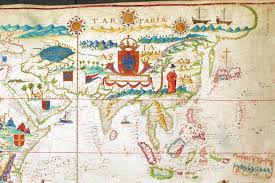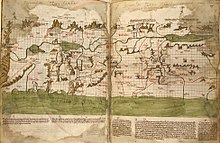 The art and science of making maps is not something new. It is often called cartography and since the beginning of time, there have been people who devoted their lives to it. In fact, the oldest known maps were written on Babylonian clay tablets at around the near 2300 B.C.
The art and science of making maps is not something new. It is often called cartography and since the beginning of time, there have been people who devoted their lives to it. In fact, the oldest known maps were written on Babylonian clay tablets at around the near 2300 B.C.
Ancient’s And Mapping
Ancient Greece also played a part in the creation of what the maps that we now have. The idea of a spherical Earth has been understood since around the time of Aristotle (350 B. C.) Books were even written by Claudius Ptolemaeus at around A.D. 85-165. The book was “Guide to Geography (Geographike Hyphygesis) and was used until the Renaissance years.
The Map Grows and Becomes More Complete
 Then you have the introduction of Medieval Maps, which were admittedly dominated by religious views that guided that era. Jerusalem is shown as the center. East was toward the top of the map. Vikings made their marks on the map around the 12-century. Each map and each addition to it was drawn by hand. This made it something that was very limited in supply. Printing, which came about during the renaissance years, was a big help in making maps more easily attained.
Then you have the introduction of Medieval Maps, which were admittedly dominated by religious views that guided that era. Jerusalem is shown as the center. East was toward the top of the map. Vikings made their marks on the map around the 12-century. Each map and each addition to it was drawn by hand. This made it something that was very limited in supply. Printing, which came about during the renaissance years, was a big help in making maps more easily attained.
The early 16th century was when whole-world maps began to show up. They followed on the heels of explorers such as Columbus who traveled to the New World. However, the first true map of the world’s creation is said to credited to Martain Waldseemuller in 1507. It included the Ptolemaic projection and dubbed America as the “New World”.
Today’s Maps
Today our maps show everything we need to know. They are much more detailed than those earlier maps. However, that does not lessen their significance. Without those early creations, we may not be able to see how the world has changed. For their time, they were geniuses and we will continue to expand on the ideas that they taught to us.